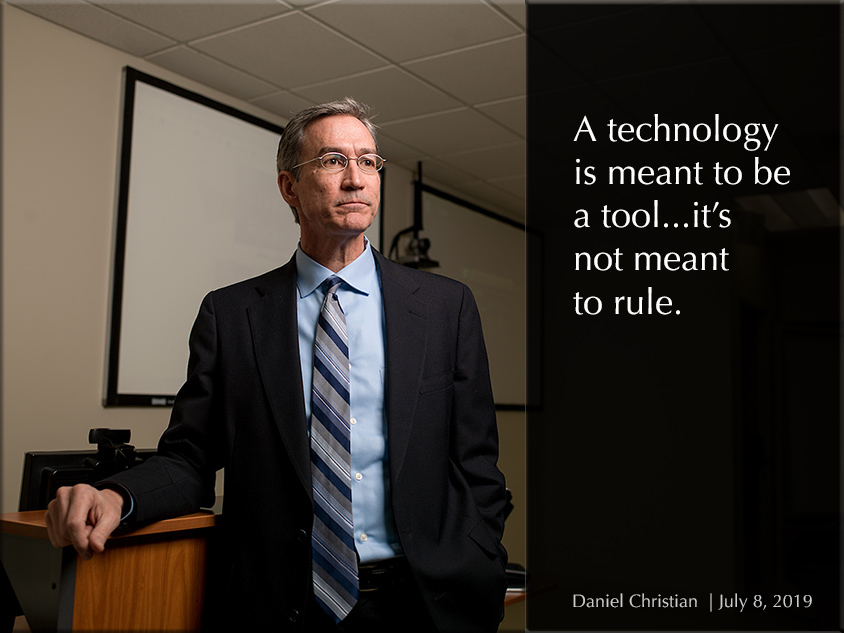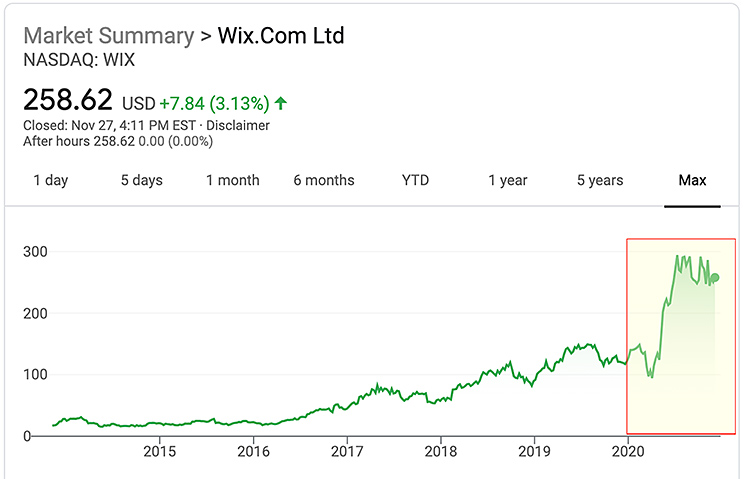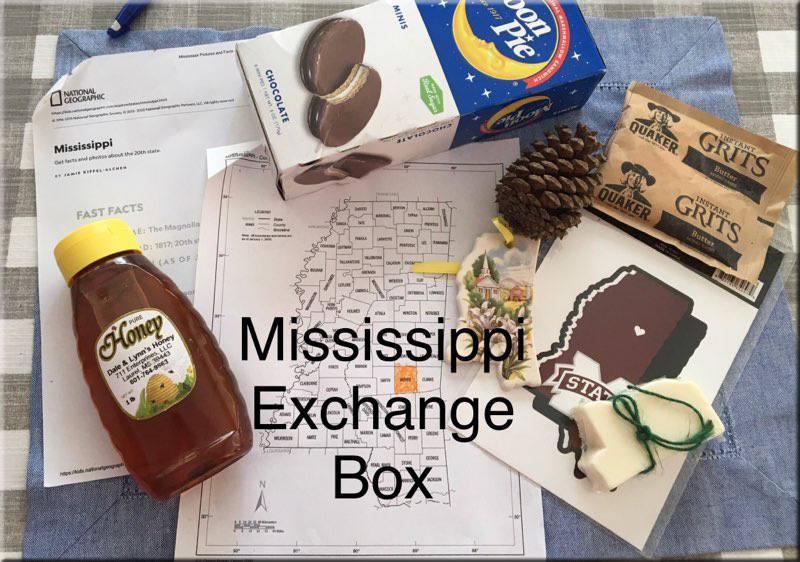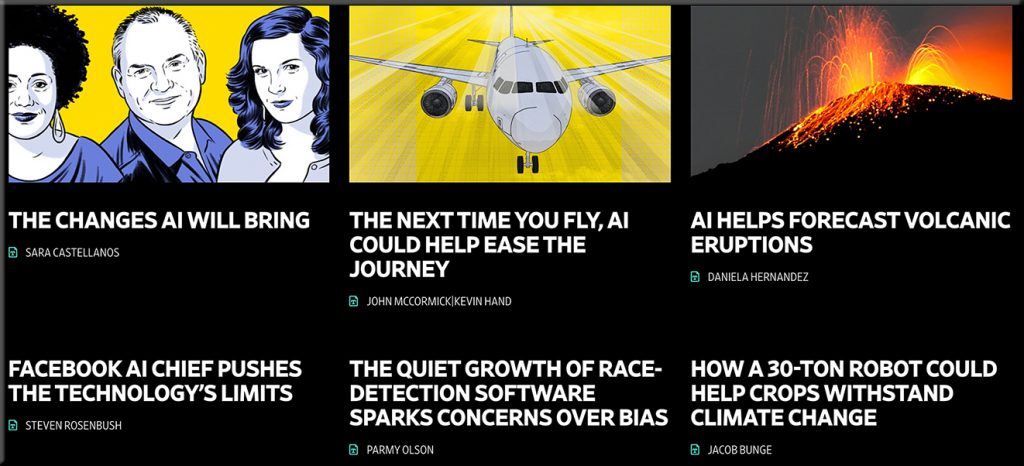10 takeaways from Big Tech’s big earnings — from protocol.com by David Pierce
What Apple, Facebook, Alphabet, Microsoft and Amazon earnings say about the state of tech.




10 takeaways from Big Tech’s big earnings — from protocol.com by David Pierce
What Apple, Facebook, Alphabet, Microsoft and Amazon earnings say about the state of tech.
14th Annual Edition | 2021 Tech Trends Report — from the Future Today Institute
Our 2021 Tech Trends Report is designed to help you confront deep uncertainty, adapt and thrive. For this year’s edition, the magnitude of new signals required us to create 12 separate volumes, and each report focuses on a cluster of related trends. In total, we’ve analyzed nearly 500 technology and science trends across multiple industry sectors. In each volume, we discuss the disruptive forces, opportunities and strategies that will drive your organization in the near future.
Now, more than ever, your organization should examine the potential near and long-term impact of tech trends. You must factor the trends in this report into your strategic thinking for the coming year, and adjust your planning, operations and business models accordingly. But we hope you will make time for creative exploration. From chaos, a new world will come.
Some example items noted in this report:
How Facebook got addicted to spreading misinformation — from technologyreview.com by Karen Hao
Excerpt (emphasis DSC):
By the time thousands of rioters stormed the US Capitol in January, organized in part on Facebook and fueled by the lies about a stolen election that had fanned out across the platform, it was clear from my conversations that the Responsible AI team had failed to make headway against misinformation and hate speech because it had never made those problems its main focus. More important, I realized, if it tried to, it would be set up for failure.
The reason is simple. Everything the company does and chooses not to do flows from a single motivation: Zuckerberg’s relentless desire for growth. Quiñonero’s AI expertise supercharged that growth. His team got pigeonholed into targeting AI bias, as I learned in my reporting, because preventing such bias helps the company avoid proposed regulation that might, if passed, hamper that growth. Facebook leadership has also repeatedly weakened or halted many initiatives meant to clean up misinformation on the platform because doing so would undermine that growth.
In other words, the Responsible AI team’s work—whatever its merits on the specific problem of tackling AI bias—is essentially irrelevant to fixing the bigger problems of misinformation, extremism, and political polarization. And it’s all of us who pay the price.
Artificial Intelligence In 2021: Five Trends You May (or May Not) Expect — from forbes.com by Nisha Talagala
How to become a livestreaming teacher — from innovatemyschool.com by Bobbie Grennier
Excerpts:
What is an encoder?
The format that a video camera records content in has to be transcoded so that it can be livestreamed to a destination like Facebook Live, YouTube, Twitch and Periscope. This is accomplished using an encoder software. An encoder optimizes the video feed for the streaming platform. The key to using an encoder is to learn to set-up scenes.
From DSC:
It will be interesting to see how learning-related platforms develop in the future. I’m continually on the lookout for innovative ideas across the learning landscapes, especially due to the Learning from the Living [Class] Room vision that I’ve been tracking this last decade. The pieces continue to come together. This might be another piece to that puzzle.
An online-based teaching and learning marketplace — backed up by AI, cloud-based learning profiles, voice-driven interfaces, learning agents, and more. Feeds/streams of content into how to learn about any topic…supporting communities of practice as well as individuals. And people will be key in this platform — technology will serve the people, not the other way around.

From DSC:
After seeing the following two items, I wondered…should more professors, teachers, and staff members be on Substack?
Heather Cox Richardson Offers a Break From the Media Maelstrom. It’s Working. — from nytimes.com by Ben Smith
She is the breakout star of the newsletter platform Substack, doing the opposite of most media as she calmly situates the news of the day in the long sweep of American history.
Excerpt:
Last Wednesday, I broke the news to Heather Cox Richardson that she was the most successful individual author of a paid publication on the breakout newsletter platform Substack.
Early that morning, she had posted that day’s installment of “Letters From an American” to Facebook, quickly garnering more than 50,000 reactions and then, at 2:14 a.m., she emailed it to about 350,000 people.
…
The news of her ranking seemed to startle Dr. Richardson, who in her day job is a professor of 19th century American history at Boston College. The Substack leader board, a subject of fascination among media insiders, is a long way from her life on a Maine peninsula — particularly as the pandemic has ended her commute — that seems drawn from the era she studies.
Is Substack the Media Future We Want? — from newyorker.com by Anna Wiener
The newsletter service is a software company that, by mimicking some of the functions of newsrooms, has made itself difficult to categorize.
Excerpt:
…Substack, a service that enables writers to draft, edit, and send e-mail newsletters to subscribers. Writers can choose whether subscriptions are free or paid; the minimum charge for paid subscriptions is five dollars a month or thirty dollars a year, and Substack takes ten percent of all revenue.
Designed to Deceive: Do These People Look Real to You? — from nytimes.com by Kashmir Hill and Jeremy White
These people may look familiar, like ones you’ve seen on Facebook or Twitter. Or people whose product reviews you’ve read on Amazon, or dating profiles you’ve seen on Tinder. They look stunningly real at first glance. But they do not exist. They were born from the mind of a computer. And the technology that makes them is improving at a startling pace.
Is this humility or hubris? Do we place too little value in human intelligence — or do we overrate it, assuming we are so smart that we can create things smarter still?
Social strikes back — from a16z.com
Social Strikes Back is a series exploring the next generation of social networks and how they’re shaping the future of consumer tech. See more at a16z.com/social-strikes-back.
Excerpt:
Until recently, it was commonly accepted that “social” was done. The market had been fully saturated, the thinking went, dominated by the holy trinity of Facebook, Twitter, and Instagram. Turns out, rumors of social’s demise have been greatly exaggerated. Not only are we seeing the rise of innovative new social networks—from the earshare of Clubhouse to the seamless interactivity of cloud gaming—but having a social component has become a powerful acquisition and retention tool for every consumer product, across education, shopping, fitness, food, entertainment, and more. In this series, we reveal what new social looks like, the forces that are driving it, and how to build it.
Meet Me in the Metaverse — from a16z.com by Jonathan Lai
Excerpts:
There are many competing visions for how we’ll build the Metaverse: a persistent, infinitely-scaling virtual space with its own economy and identity system.
…
New social modalities will emerge in the Metaverse. Advances in cloud streaming and AI will enable new forms of engagement with friends—for example, the ability to pop into a persistent virtual world and discover new people and experiences together, entirely unplanned.
Live, Social, and Shoppable: The Future of Video — from a16z.com by Connie Chan
Excerpt:
Now, we’re about to enter a whole new era of video-first products that extend far beyond entertainment and gaming. If phase one of video was a laid-back experience, video 2.0 will be far more interactive and participatory, with users engaging with the platform, giving direct feedback on the content, and fundamentally shaping the experience in real time.
Also see:
Edtech’s Answer to Remote Learning Burnout — from a16z.com by Anne Lee Skates and Connie Chan
Excerpt:
While previous generations of edtech largely focused on in-school content distribution, more recently founders have turned their attention to after-school and out-of-school education. There’s a lot left to build. We believe post-COVID online education will differ from the past in key ways.
The Digital Divide for Tribal College Students — COVID, CARES Act, and Critical Next Steps — from diverseeducation.com
Excerpt:
In this episode staff writer Sara Weissman shares a story that focuses on the digital divide for Native Americans by bringing in voices of tribal college leaders and their students during the COVID 19 pandemic.
Many don’t know but Native American colleges and universities have long struggled with the worst internet connectivity in the nation while ironically paying the highest rates for service. Hear first-hand how students from Diné College and other institutions are currently affected. Carrie Billie (Big Water Clan), President & CEO of the American Indian Higher Education Consortium (AIHEC) and Dr. Cynthia Lindquist (Star Horse Woman), President of Cankdeska Cikana Community College in North Dakota, break down the data and lay out critical next steps necessary to address the digital divide.
Many don’t know but Native American colleges and universities have long struggled with the worst internet connectivity in the nation while ironically paying the highest rates for service.
From DSC:
When will there be justice!? Let’s join in and make amends and provide the funding, concrete assistance, products, and services to Native American colleges, universities, and communities. Some potential ideas:
We need to do the right thing here. This is another area* where our nation can do much better.
* Here’s another example/area where we can do much better and make amends/changes.
Addendum on 12/7/20:
Building your own website is cool again, and it’s changing the whole internet — from protocol.com by David Pierce
Writers, creators and businesses of all kinds are looking to set up their own space online again. To do that, companies are trying to figure out how to deal with two very different internets.
Excerpt:
Websites are back. After years of being sucked into the vortexes of Facebook and Yelp pages, devoting their time to amassing Twitter followers and Instagram likes, creators and businesses alike have seen the benefits of hanging up their own shingle again. Legions of writers are setting up Substack newsletters. Millions of people and businesses are setting up shop for the first time online using Squarespace or WordPress. Wix reported 7.8 million new users in the last quarter alone, and more than 29% revenue growth.
…
Substack doesn’t see itself as a newsletter platform, or an email-based product. The company is fundamentally interested in fostering direct relationships between readers and writers, rather than let them be mediated by companies whose interests are not always aligned with either side.
The driving force behind all that growth? Thanks to a pandemic closing stores, keeping people at home and leaving a lot of people without jobs, the only way to move forward is to figure out the internet.
From DSC:
Though I really like WordPress — and this blog uses it — look at the stock performance in 2020 for Wix!

Our youngest daughter and I are going to set up a blog for her, as she loves to write. The idea was from her and my wife, but I love it! I think it’s highly motivating to her and she can have a voice…that she can share her writings with others. She’s got quite an imagination — so look out all! 🙂
From DSC:
Who needs to be discussing/debating “The Social Dilemma” movie? Whether one agrees with the perspectives put forth therein or not, the discussion boards out there should be lighting up in the undergraduate areas of Computer Science (especially Programming), Engineering, Business, Economics, Mathematics, Statistics, Philosophy, Religion, Political Science, Sociology, and perhaps other disciplines as well.
To those starting out the relevant careers here…just because we can, doesn’t mean we should. Ask yourself not whether something CAN be developed, but *whether it SHOULD be developed* and what the potential implications of a technology/invention/etc. might be. I’m not aiming to take a position here. Rather, I’m trying to promote some serious reflection for those developing our new, emerging technologies and our new products/services out there.
From DSC:
Below are but some of the changes to the learning ecosystems out there. Certainly, more are coming.
Ex-Google employees form virtual tech ‘school’ for gap year students amid college closures — from cnbc.com by Jennifer Elias
Along these lines, see:
From DSC:
Also, to see some more changes to the learning ecosystems out there, set up a Google Alert (or something similar in Feedly or via another tool) for “Learning Pods,” “Pandemic Pods,” and/or the “growth of homeschooling.” Here’s but one recent example:
Life can be very hard for autistic, gifted and special needs learners. Autistic and gifted learners often times struggle in school because they learn very differently than their peers. These special learners need a personalized approach to their education that allows them to learn in their own way at their own pace.
Many times parents and students feel as if they are the only ones like them in the world. This can often times lead to isolation and frustration. It is important for all autistic, gifted and special needs to unite in order to support one another. We are named Academic Warriors because all our students are superheroes in a world that doesn’t always understand and/or appreciate them. We help our students to become strong, independent and positive learners despite what the world may think of them.
It is the mission of Academic Warriors to help create positive learning experiences and communities throughout the United States for autistic, gifted and special needs learners. We offer online courses, programs, private school and in person events that foster an unique learning environment that promotes unity among all our students and families. We strive to create online and in person learning communities in every state that will provide educational opportunities for all families of autistic, gifted and special needs students. Together we can create a better world for the autistic, gifted and special needs learner.
From DSC:
As part of a homeschooling-based situation, my wife received the following item for one of our daughters (who needs additional/personalized assistance to learn). Simultaneously, she and our daughter sent them a Michigan Exchange Box. Very cool.

I believe my wife found this out at the following group in Facebook:
Some channels out on Youtube that have to do with learning:
(and by the way, according to Jane Hart’s recent Top 200 Tools for Learning, YouTube is in the #1 spot for the 5th year in a row!)
“Horse Sense Tutoring Services is a unique resource that combines the power of Equine Assisted Learning with evidence-based reading and math strategies that engage the mind, body, and emotions in learning. We use the principles of discovery, experience, movement, reflection, and connection in partnership with our horse friends.
…
Based at The Barn for Equine Learning…my program offers targeted reading, math, and basic horsemanship tutoring for students in grades K – 8. Horses become teaching and learning partners as students experience academics and social-emotional learning in a whole new way.
If you are looking for a unique tutoring and confidence-building experience for your child, PM for more information. Sessions are held outdoors and/or in an open barn setting.
(Small group field trips with an introduction to basic horsemanship skills are also available).
From DSC:
So these are just a few examples of how the learning ecosystems are changing out there! Surely, there will be more changes coming down the pike.
Top 200 Tools for Learning — from toptools4learning.com by Jane Hart
Excerpt:
The Top Tools for Learning 2020 was compiled by Jane Hart from the results of the 14th Annual Learning Tools Survey, and released on 1 September 2020. For general information about the survey and this website, visit the About page. For observations and infographics of this year’s list, see Analysis 2020.
Facial Recognition Start-Up Mounts a First Amendment Defense — from nytimes.com by Kashmir Hill
Clearview AI has hired Floyd Abrams, a top lawyer, to help fight claims that selling its data to law enforcement agencies violates privacy laws.
Excerpts:
Litigation against the start-up “has the potential of leading to a major decision about the interrelationship between privacy claims and First Amendment defenses in the 21st century,” Mr. Abrams said in a phone interview. He said the underlying legal questions could one day reach the Supreme Court.
Clearview AI has scraped billions of photos from the internet, including from platforms like LinkedIn and Instagram, and sells access to the resulting database to law enforcement agencies. When an officer uploads a photo or a video image containing a person’s face, the app tries to match the likeness and provides other photos of that person that can be found online.
From DSC:
Many, if not all of us, are now required to be lifelong learners in order to stay marketable. I was struck by that when I read the following excerpt from the above article:
“I’m learning the language,” Mr. Abrams said. “I’ve never used the words ‘facial biometric algorithms’ until this phone call.”
Also see:
Acts of meaning: How AI-based interviewing will transform career preparation in higher education — from er.educause.edu by Alan Jones, Suzan Harkness and Nathan Mondragon
Excerpt:
Machines parrot and correlate information. They do not comprehend or synthesize information the way humans do. Factors such as accents in pronunciation, word ambiguity (especially if a word has multiple meanings), deeply coded biases, limited association data sets, narrow and limited network layers used in job screening, and static translations will continue to provide valid ground for caution in placing too much weight or attributing too much confidence in AI in its present form. Nonetheless, AI has crept into job candidate screening, the medical field, business analytics, higher education, and social media. What is currently essential is establishing an understanding of how best to harness and shape the use of AI to ensure it is equitable, valid, and reliable and to understand the shifting paradigm that professional career counselors play on campus as AI becomes more ubiquitous.
There appear to be three points worth considering: the AI interview in general, the predominance of word choice, and expressiveness as read by facial coding.
From DSC:
Until there is a lot more diversity within the fields of computer science and data science, I’m not as hopeful that biases can be rooted out. My niece, who worked for Microsoft for many years, finally left the company. She was tired of fighting the culture there. The large tech companies will need to do a lot better if AI is going to make FAIR and JUST inroads.
Plus, consider how many biases there are!

